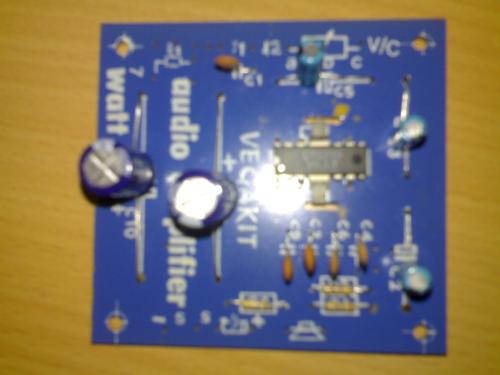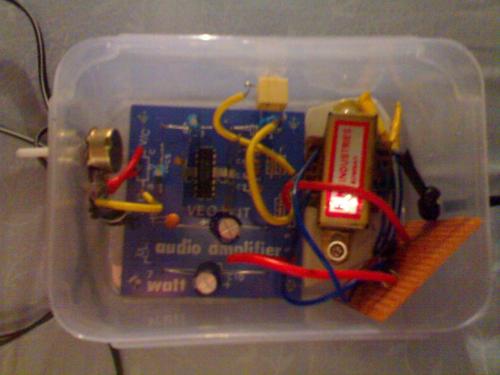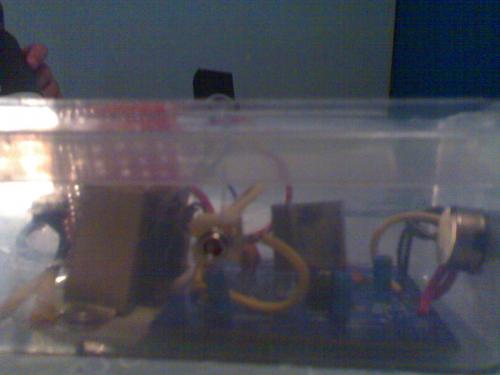Since I don't know what was included in the kit parts and from the schematic I read, you have two options. Firstly, if you already have just the transformer (see comments below about transformer), you will need to built your own DC power supply. A power transformer that you need has 4 or 5 leads. The primary side is usually color-coded black. That's the 120 VAC side. Secondary side usually red for a 2 lead one or red with a third a different color denoting the center tap. Color-coding is standard, but not always followed.
Depending on whether it is a center-tapped transformer will determine what type of rectifier circuit will be needed. If the kit parts did not include additional parts for building the DC power supply, you will need to purchase them. I can draw up a schematic for the power supply once I have the details.
Secondly, the easiest method is to use an a/c adapter of the correct voltage/current rating. Your schematic shows amp operating at 14.7 volts. A good close a/c adapter would be a 12 volt rated at 1 to 1.5 amps. This will handle 12 watts and provide you with no drop out because of voltage drop. You will need a matching jack for the a/c adapter if you wish to not hot wire the adapter right to the amp. A plug/jack combo will allow you to unplug a/c adapter from amp.
Polarity is going to be a concern no matter which way you go. I hope you have a Digital Volt Meter (DVM) or some voltmeter to read dc so you can identify polarity should you go with the a/c adapter. Lots of times the plug polarity is marked on the adapter case or even the plug.
The transformer you have described sounds more like an audio type and not a power transformer.
Your best bet is to try to get some simple beginner's books on electronics/electricity. Will try to track down some online information for you.
Ron



















 Sign In
Sign In Create Account
Create Account

